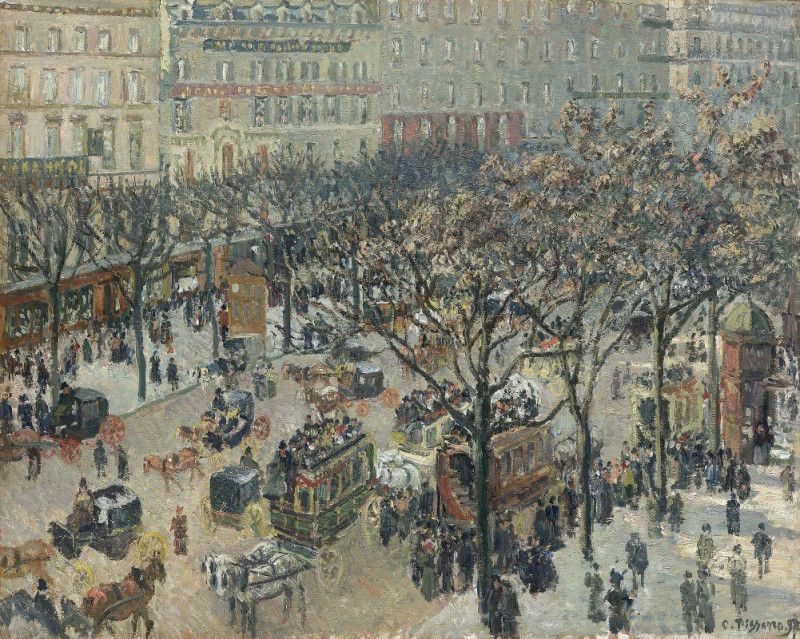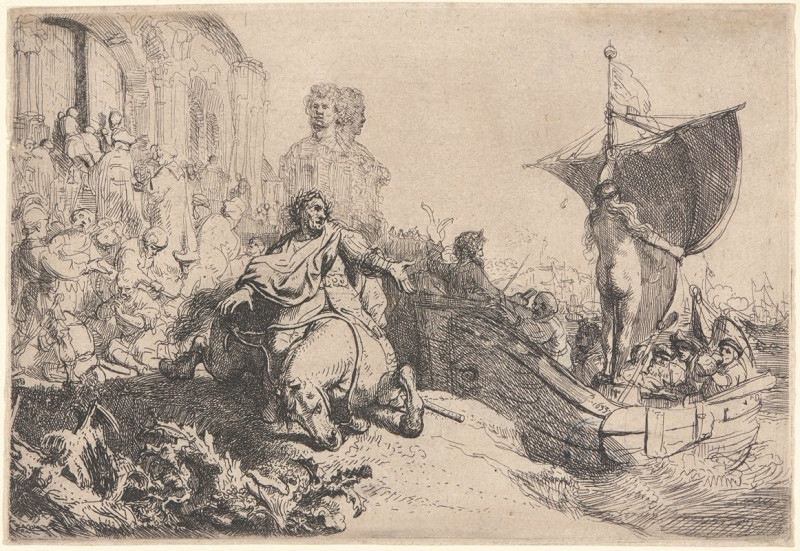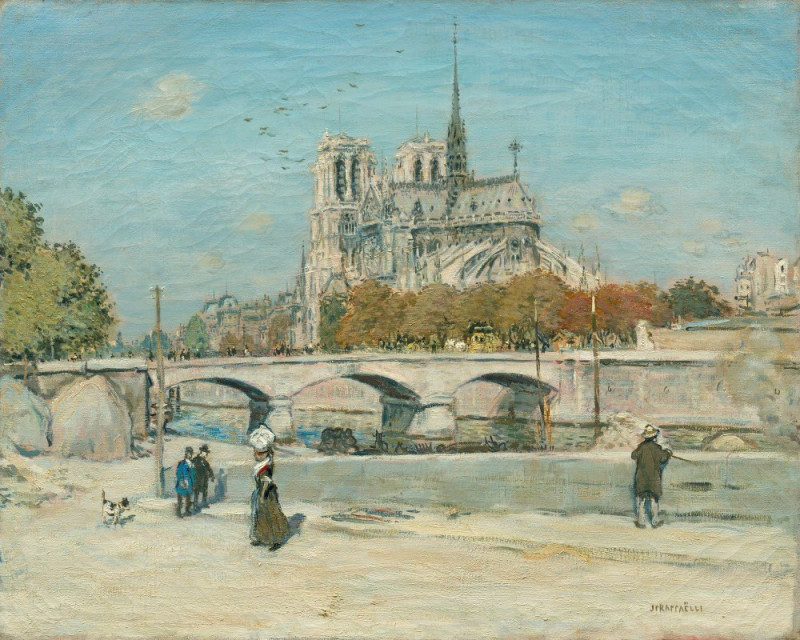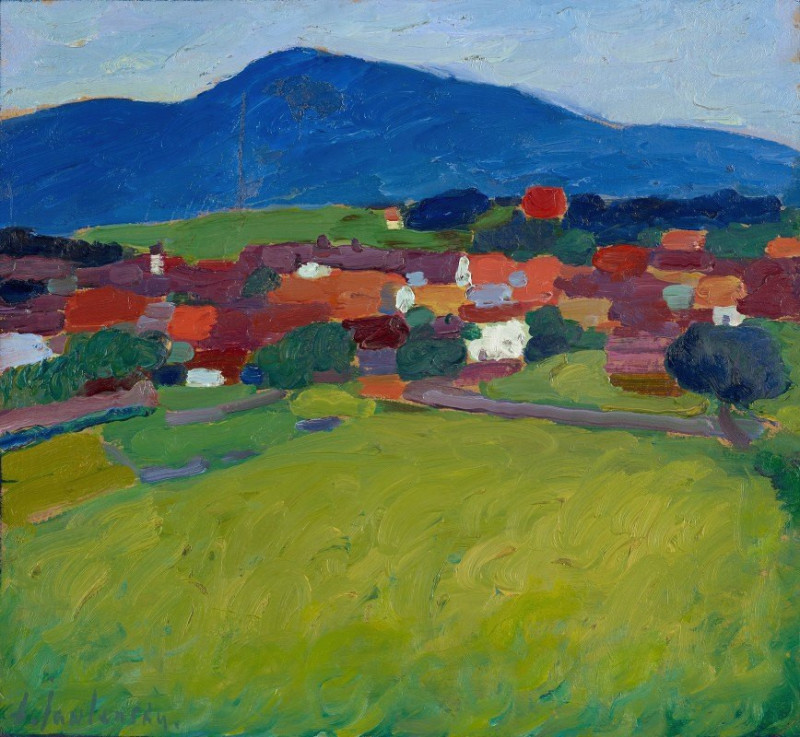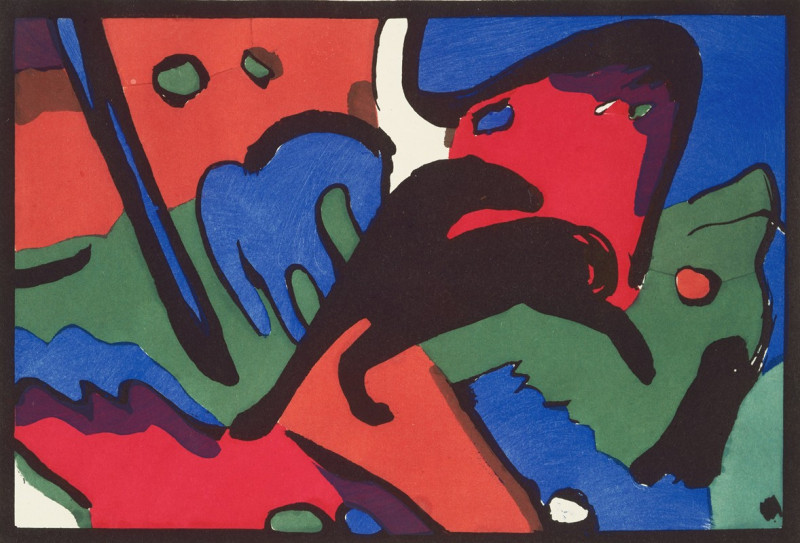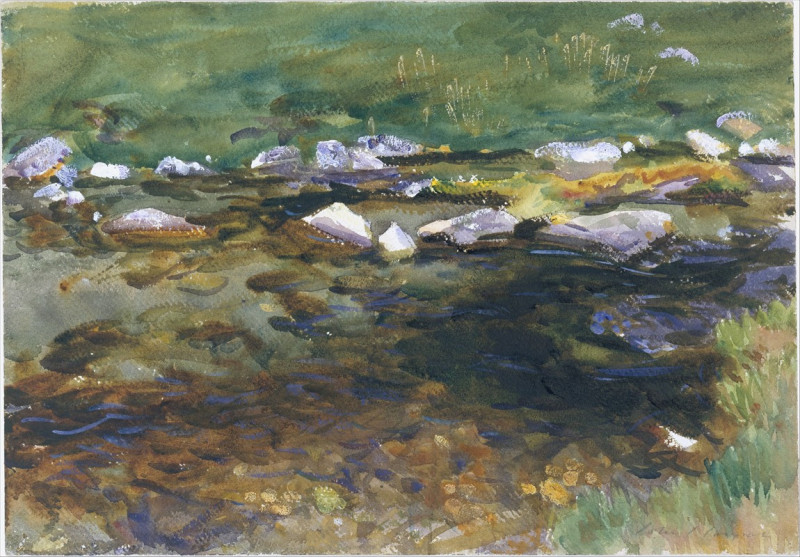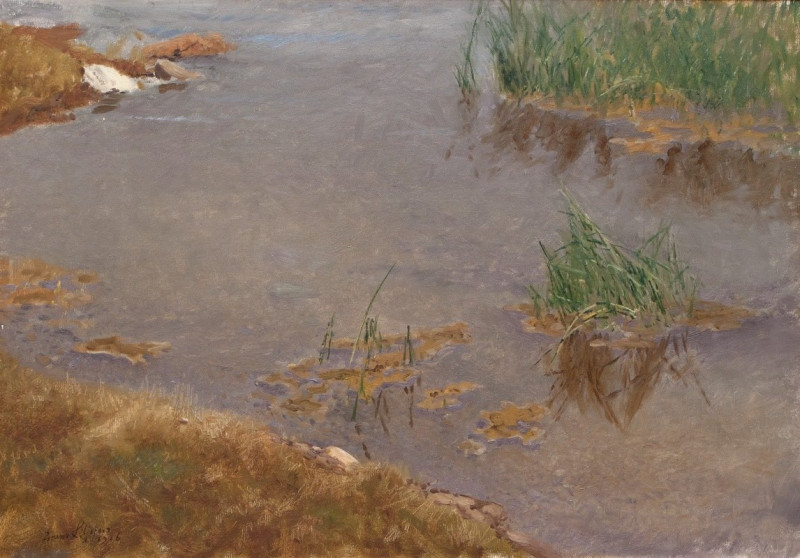Boulevard des Italiens,Morning_Sunlight (1897)
Technique: Giclée quality print
Recommended by our customers
More about this artwork
"Boulevard des Italiens, Morning Sunlight" is an enchanting work by the renowned Impressionist painter Camille Pissarro, created in 1897. This exquisite painting beautifully captures a bustling Parisian street scene set against the backdrop of the vibrant Boulevard des Italiens. Through Pissarro's masterful use of light and color, the canvas pulses with the energy of morning sunlight filtering through the leafy branches of the trees that line the boulevard.In the painting, viewers are treated to a vivid tableau of daily life during the Belle Époque. Horse-drawn carriages and the early omnibuses crowd the avenue, illustrating the busy traffic of the time. Well-dressed figures of men and women stroll along the sidewalks or gather in small groups, depicted in quick, lively brushstrokes that suggest movement and liveliness. The architecture of the buildings in the background is rendered with enough detail to give a sense of their grandeur, yet with the softness typical of Impressionism, focusing on the interplay of light and shadow rather than precise details."Pissarro's ability to depict urban life with such dynamism and color not only marks him as a pivotal figure in the Impressionist movement but also provides us a window into the past, showing the rhythm of Parisian life at the turn of the century.
Delivery
Returns
Blessed are they who see beautiful things in humble places where other people see nothing. — Camille Pissarro
Camille Pissarro (1830-1903) was born on St.Thomas (now the US Virgin Islands) to a Portuguese father and a Dominican mother. He went to Paris to study art at Ecole des Beaux-Arts. He was an early pioneer of pointillism and neo-impressionism and later became a mentor of many famous impressionist painters including Cezanne, Manet, Renoir, and Gauguin. His paintings depicted rural and urban French landscapes and lifestyle. Many of his works politically captured images of peasants and laborers. Today, he is considered the father of impressionism.

